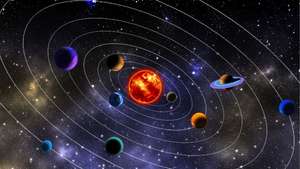
Magnetism and Electricity: How It Works
The fusion of magnetism and electricity forms the backbone of modern technology, powering everything from household appliances to cutting-edge medical devices. Understanding the intricate relationship between magnetism and electricity is essential to comprehend the inner workings of generators, transformers, and a myriad of electronic gadgets. In this article, we delve into the fundamentals of magnetism and electricity, exploring their interconnected nature and the transformative impact they have on our daily lives.


Magnetism Basics: Magnetic Fields and Poles
1. Magnetic Fields:
At the heart of magnetism is the concept of a magnetic field. A magnetic field is an invisible force that surrounds a magnet and extends into the space around it. This field is responsible for the interactions between magnets and other materials.
2. Magnetic Poles:
Every magnet has two poles - a north pole and a south pole. Like poles repel each other, while opposite poles attract. The magnetic field lines flow from the north pole to the south pole, creating a continuous loop around the magnet.
Generating Magnetism: How Materials Become Magnets
1. Ferromagnetic Materials:
Certain materials, such as iron, nickel, and cobalt, are inherently magnetic. When these materials are exposed to a magnetic field, their atomic magnets align, reinforcing the overall magnetic effect.
2. Temporary Magnets:
Other materials, like copper or aluminum, can become temporarily magnetic when exposed to a strong external magnetic field. However, they quickly lose their magnetism once the external field is removed.
Electricity Basics: Charges and Current
1. Electric Charges:
Everything around us is composed of atoms, which consist of positively charged protons, negatively charged electrons, and neutral neutrons. When electrons move from one atom to another, an electric charge is created.
2. Electric Current:
The flow of electric charge is known as an electric current. It is typically measured in amperes (A). In a conductive material, such as a metal wire, electrons can move freely, creating a flow of current when a voltage is applied.
Magnetic Fields Generated by Electric Currents
1. Oersted's Discovery:
In 1820, Hans Christian Oersted discovered that an electric current flowing through a wire generates a magnetic field around the wire. This groundbreaking discovery established the intrinsic link between electricity and magnetism.
2. Right-Hand Rule:
The direction of the magnetic field around a current-carrying wire can be determined using the right-hand rule. If you point your thumb in the direction of the current, your fingers will indicate the direction of the magnetic field.
Electromagnets: The Marriage of Magnetism and Electricity
1. Creating Electromagnets:
By winding a wire into a coil and passing an electric current through it, a magnetic field is generated. This arrangement forms an electromagnet, which can be turned on and off by controlling the flow of current.
2. Applications of Electromagnets:
Electromagnets find widespread use in various applications, from magnetic locks and MRI machines to the magnetic coils in speakers and electric motors.
Faraday's Law of Electromagnetic Induction
1. Generating Electricity from Magnetism:
Michael Faraday's groundbreaking work in the 1830s demonstrated that a changing magnetic field can induce an electric current in a nearby conductor. This phenomenon, known as electromagnetic induction, is the principle behind generators and transformers.
2. Generators:
Generators convert mechanical energy into electrical energy by rotating a coil of wire within a magnetic field. As the coil spins, it cuts through the magnetic field lines, inducing a current in the wire.
3. Transformers:
Transformers utilize electromagnetic induction to change the voltage of an alternating current (AC). By varying the number of turns in the primary and secondary coils, transformers can step up or step down the voltage as needed.
The Role of Magnetism and Electricity in Electronics
1. Semiconductors and Electronics:
The semiconductor revolution, driven by the controlled manipulation of electrical currents using materials like silicon, has given rise to the modern era of electronics. Transistors, integrated circuits, and microprocessors leverage the intricate interplay of magnetism and electricity.
2. Magnetic Storage:
Hard drives and magnetic tape rely on the encoding of information in magnetic fields. The orientation of magnetic particles on the storage medium represents binary data, enabling the storage and retrieval of vast amounts of information.
Powering the Modern World
The marriage of magnetism and electricity is a dynamic partnership that underpins the technological landscape of the modern world. From the generation of power to the functionality of electronic devices, this symbiotic relationship continues to shape the way we live and work. As technology advances, our understanding of magnetism and electricity will undoubtedly lead to even more innovative applications, paving the way for a future powered by the forces that connect these fundamental aspects of the physical world.




